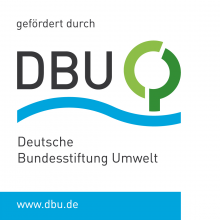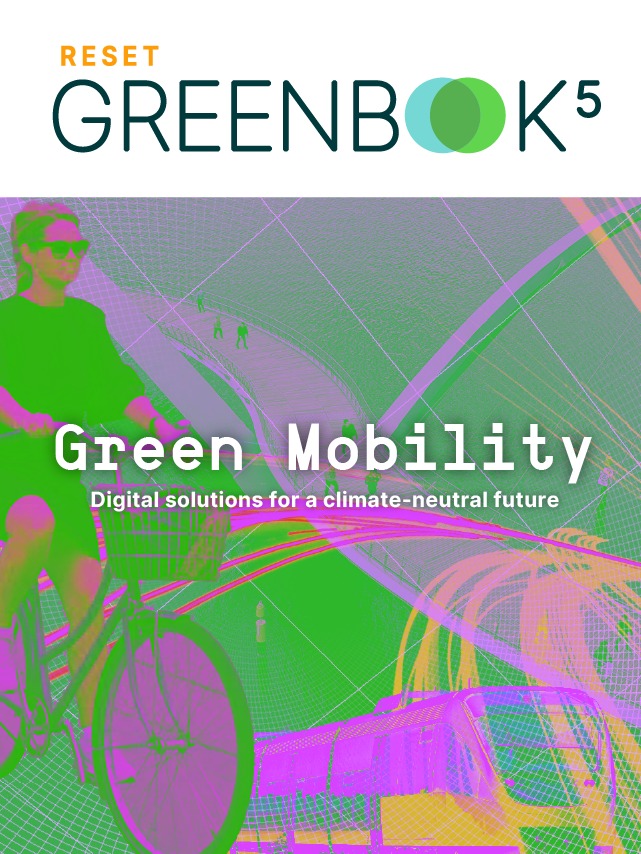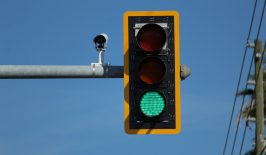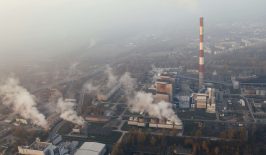Mobility-as-a-Service is the term used to describe a new concept for the mobility of the future. The idea behind it is to move from A to B, with different mobility offers linked by digital tools and platforms. Instead of getting into your own car, you type the start and destination into your smartphone and the fastest, most comfortable or least CO2-intensive route appears on the screen, depending on your choice of parameters. This could consist of a short route on foot, by bike or e-scooter, a section by bus or train and perhaps also an on-demand shuttle, depending on the available mobility services. If everything works well together, the result is not only comfortable, free of traffic jams and the search for parking spaces, but also lower on traffic-related CO2 emissions, less noise and air pollution and more public space through a shift away from motorised individual transport.
For this to happen seamlessly, however, not only apps and other digital solutions are needed that reliably link the various services, but also a transport system that is adapted to the actual demand. In addition to various traffic and real-time data — such as GPS data of buses and trains, timetables, route networks or traffic jam reports — movement data is also interesting for mobility-as-a-service offers, i.e. data that our apps deliver via GPS and with which the actual movement patterns of people can be tracked.
However, it is personal data that can reveal a lot about people, and should therefore be handled very carefully. The freemove project deals with the exploration of our mobility data in particular. Comprised of a team of transdisciplinary experts in the fields of machine learning, digital self-determination, human-centred computing and information security, freemove is exploring possible technical solutions for anonymising movement data and developing recommendations for practical action based on real usage scenarios.

Markus Sperl coordinates the freemove project for the Technology Foundation Berlin. We talked to him about what exactly mobility data is all about, why movement data is so interesting for the mobility revolution and how it can be used in accordance with data protection laws.
When we talk about the mobility of the future, we cannot avoid the topic of mobility data handling. What exactly is the data that is interesting in this context and what is to be achieved with it?
Much data is bundled under the generic term “mobility data”. We are concerned here with personal movement data that is recorded by smartphone apps via GPS, for example. This contrasts with mobility data without a personal reference, such as public transport timetables or road networks. Since these do not contain any data protection risks, they are not relevant in the context of our project.
Movement data is used, for example, for realistic traffic simulations in order to be able to estimate changes due to road closures or road works in advance, or to expand the infrastructure according to the actual behaviour of drivers, such as the fleet positioning of shared mobility services. Routing algorithms can also be improved with this data according to various criteria.
The somewhat abbreviated idea is that a broad database and detailed knowledge about the way citizens move will result in optimal mobility solutions that are more efficient and sustainable without having to change or adapt at one point or another. Applications that make traffic more efficient need this data in order to improve algorithms — but in the end, they have to be used by the road users and are therefore only a limited substitute for a change in thinking.
The freemove project is funded by the Federal Ministry of Education and Research (BMBF). From the scientific side, the project partners are the Berlin University of Applied Sciences (HTW), the Free University (FU), the Technical University (TU) and the Berlin University of the Arts (UdK), extended by the German Aerospace Center (DLR).
What about Open Data; is there already movement data available that transport companies and urban planners can use?
To our knowledge, there are hardly any movement data sets worth mentioning that are openly accessible as open data, and for good reason from a data protection point of view. This does not mean that there is not a lot of movement data. Mobile phone providers sell some of this data to the public transport system and to administrations.
Open traffic data, on the other hand, does exist, such as the BMDV’s Mobilithek. In combination with the Mobility Data Space, where companies can offer their data for a fee — probably mostly for further profit-generating models — that’s something.
I am ambivalent about the open data issue — sensitive data needs to be protected, perhaps through organisational measures such as access restrictions or processes where I, as a user, have to prove that I have a vested interest in the data. At the same time, I don’t necessarily see the greatest possible public interest orientation in the products if purely private-sector actors have access to this data. In my experience, this is more likely to come from administrations, science and civil society.
Sharing with administration is now also to be addressed in legislation and I am confident that in the future we will find ways to protect individuals, but at the same time still be able to exploit potentials.
Do you know cities or individual transport companies that already use movement data in public transport? How do they handle sensitive data?
In a more or less intensive form, this is now standard practice for most transport companies — for example, German transport companies such as Bahn, BVG, etc., already generate capacity utilisation forecasts, use automatic passenger counts and conduct household surveys. At the same time, especially in small cities, there is often a lack of data science expertise to actually exploit the potential.
In general, we can say that the handling of sensitive data in practice can be improved — but, of course, we come from academic discourses with very high demands.
Why is the collection of movement data so sensitive? And how could we use the data in a way that preserves privacy?
Movement profiles are highly individual and can potentially contain information that affects our privacy, be it doctor visits or other movement patterns that allow conclusions to be drawn about lifestyle issues such as sexuality, religious practice or the like. The collection of this data is problematic because it often happens without users’ reflective and conscious consent. Let’s be honest — data protection regulations are rarely read and app permissions are usually set in auto-pilot in order to be able to use the desired service as quickly as possible.
Privacy is preserved by informing users about practices and risks in a way that they “really” consent to. And by taking safeguards as a data processor, such as having little raw data access or using new technologies that preserve privacy. This is a vital field where a lot is happening right now. Differential privacy is one of the better known examples.
Differential Privacy
Encryption is an established tool for protecting sensitive data. However, it also limits the processability of the data.
Differential privacy, on the other hand, is a procedure with which information can be published without encrypting it, but while preserving privacy. For this purpose, noise is added to the data so that no more clear statements can be made about certain properties of the data.
How will you proceed with the freemove project?
We work on a use-case basis. After several practical exchanges, we have decided on three use cases based on the results and the knowledge we can contribute as a consortium. Firstly, we are working on standard procedures for movement data analysis, secondly on open data and raw data formats, and thirdly on citizen science or data donation platforms and their technical implementation.
Together with students, we have collected a small data set on which we are now testing anonymisation technologies. The main goal, however, is to investigate the quality of information in the direction of the data donors.
What role do citizen science projects like FixMyBerlin from the ADFC play in the transport turnaround?
Such projects can provide important impulses and help shape agendas, but will hardly be able to meet needs in terms of the amount of data generated. In the end, it will come down to a combination of different data sources. Of course, such projects are still important for science because they generate data to solve partial questions. And the high level of interest is definitely an indication that citizens are willing to give up parts of their privacy for the “right” purposes.
Green Mobility – Digital solutions for a climate-neutral future
Autonomous vehicles, e-mobility, AI-controlled traffic planning, new modes for moving from A to B — what will the mobility of tomorrow look like?
We present the digital solutions being proposed for climate-neutral transport and logistics and discuss the new challenges of “digital mobility” in this dedicated special feature.
You say that the data obtained should be made available to science and society; what exactly does that look like? In terms of more attractive and optimised local transport, it would make sense to make it available to as many transport companies as possible, wouldn’t it?
What we see in practice is that privacy concerns and protection of trade secrets are used by private companies as arguments to prevent the sharing of their own data. However, if there is added value in the data for the common good, we are in favour of sharing it under certain conditions, i.e. if anonymisation technologies have been properly applied and the data has been aggregated in a sufficiently coarse way.
Ultimately, it is a matter of interpreting the GDPR correctly and in a normatively meaningful way and acting within its legal framework in a public interest-oriented manner. On which platforms and via which exact transmission channels this ultimately happens is another question.
Where do you stand in the project right now? What are the next steps for freemove?
We are in the final year of the project and are just starting our third usage scenario on data donation platforms. At the same time, we are preparing a conference for a more detailed exchange of practice, which will take place on 27 September 2023. And we are working on the design of an information platform for data protection-centred action with transaction data.
What do you think is needed in addition to a good database for sustainable mobility or for a well-functioning public transport system?
Above all, investments are needed, from personnel to infrastructure to the quality of the trains and buses. As long as there is no minimum level of attractiveness in terms of safety, speed, well-developed networks and reliability, the mobility revolution will be difficult. In the end, price is also a comprehensibly important component — sustainable mobility must not cost more money than simply continuing to drive a car.
I would like to see a clear promotion of active modes of movement from cycling to walking, accompanied by efficient public transport — in contexts where this can be sensibly implemented. Of course, data institutes are important, but they cannot be the only solution.
Markus, thank you very much for the interview!

Dieser Artikel gehört zum Dossier „Mobilitätswende – Smart in Richtung Klimaneutralität“. Das Dossier ist Teil der Projekt-Förderung der Deutschen Bundesstiftung Umwelt (DBU), in deren Rahmen wir vier Dossiers zum Thema „Mission Klimaneutralität – Mit digitalen Lösungen die Transformation vorantreiben“ erstellen.
Mehr Informationen hier.











